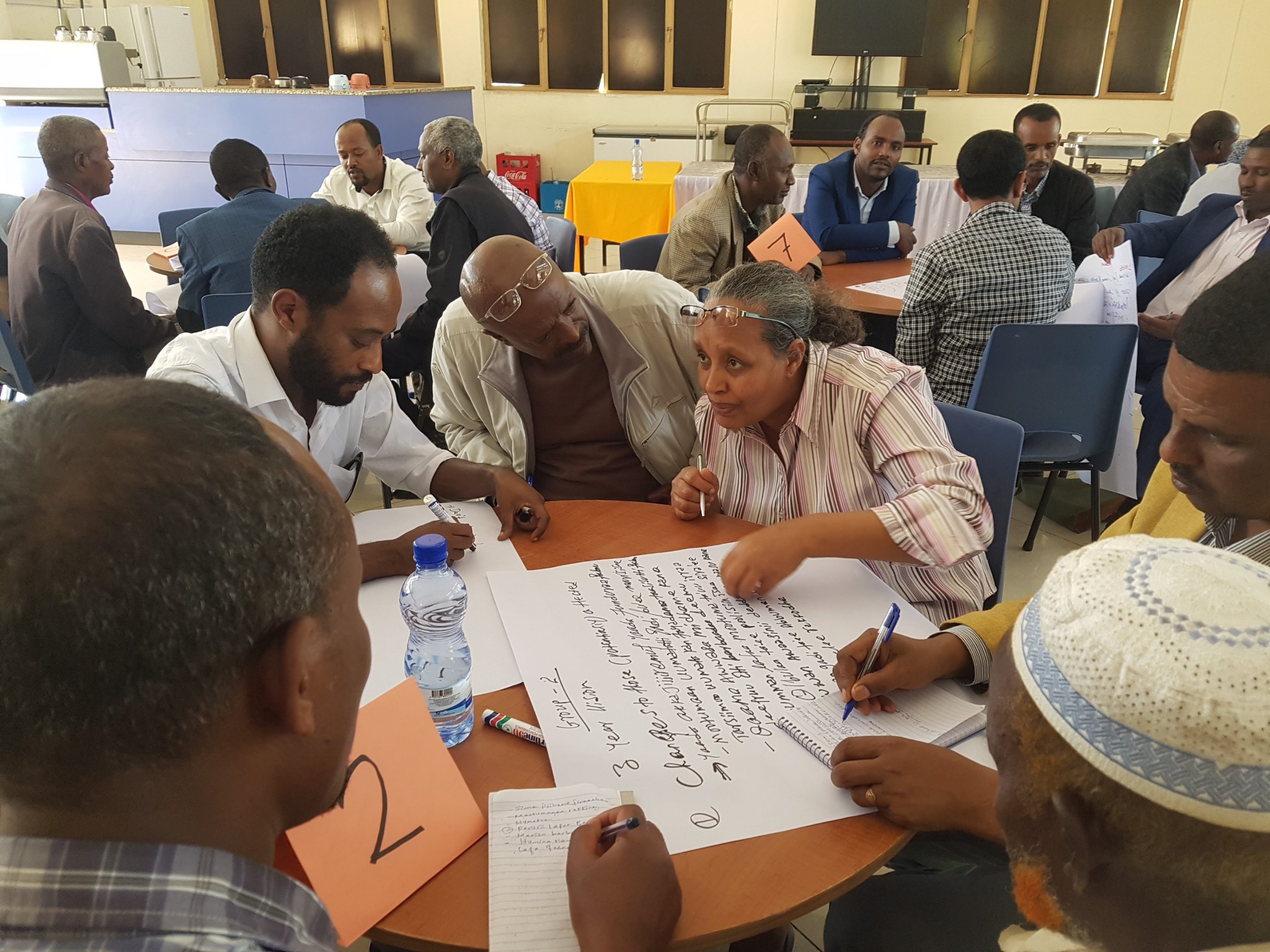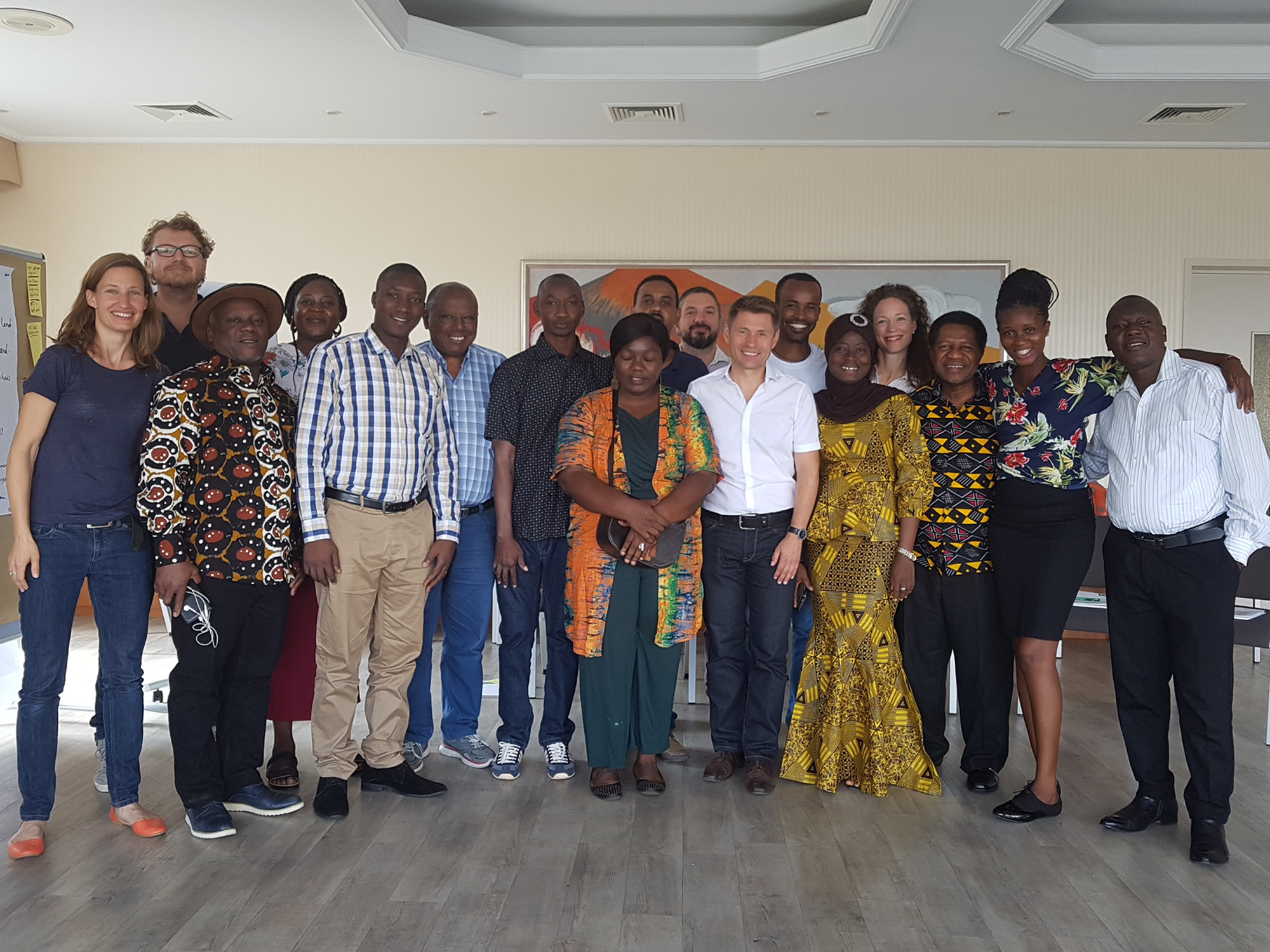THE APPROACH
Our Approach: Multi-Actor Partnerships
Land governance challenges cannot be resolved by one actor alone. Any solution must take the interests of communities, traditional authorities, representatives of government and other stakeholders into account. Together with partners we aim to open up problem-focused spaces for dialogue and collaboration.
“Coming together is the beginning. Staying together is progress. Working together is success.”
Henry Ford
But: experiences of existing dialogue spaces reveal that there are substantial differences as to how they operate and function. From a human rights-based perspective, the primary objective is to engage rights-holders (citizens) in accountability dialogues with state authorities (as duty bearers). This is part of an inclusive and democratic decision-making process.
Beyond those two parties, traditional authorities may have a key role to play with regard to land governance in many rural areas of African countries. Also, the private sector is generally considered as a relevant constituency when referring to multi-actor processes.
In general, the scope and objectives of the specific multi-actor dialogue determine who should be involved and to which extent.
Establishing a culture of collective dialogue among those actors is crucial, so that all voices are heard.
Power disparities between the different actors in such a partnership can be huge and need to be addressed. Correspondingly, the Land for Life-initiative provides targeted support to strengthen civil society and to promote socio-legal empowerment processes.
“The victory we celebrate today could not be possible without a multi-actor partnership involving government, donor communities, international partners, CSOs, and the customary communities. This same spirit is needed even more for the implementation of the law as it is very crucial to our land reform process.”
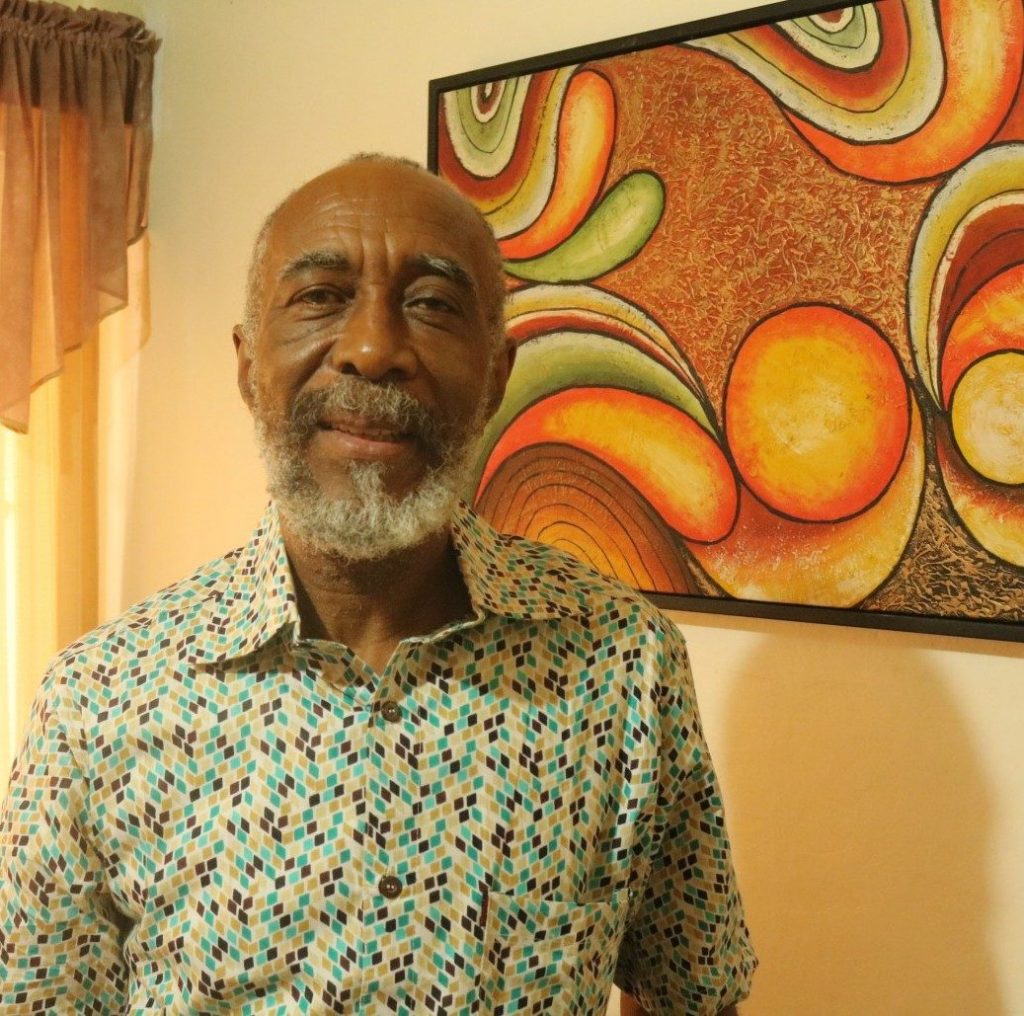
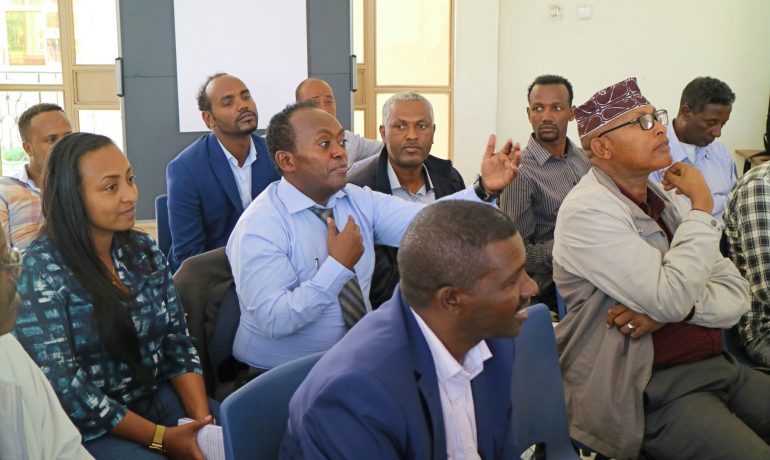
Why Multi-Actor Partnerships?
![]() to address complex challenges through dialogue and collaboration
to address complex challenges through dialogue and collaboration
![]() to access (local) knowledge and expertise
to access (local) knowledge and expertise
![]() to orient the way actors think and operate towards the collective common good
to orient the way actors think and operate towards the collective common good
![]() to bring all voices and interests to one table; thereby fostering legitimacy, ownership and sustainability of decisions
to bring all voices and interests to one table; thereby fostering legitimacy, ownership and sustainability of decisions
![]() to generate creative, innovative solutions
to generate creative, innovative solutions
![]()
to open up space for transformative and systemic change
Putting the approach into practice
The aim of the Land for Life-initiative is to contribute to the formulation and implementation of policies and strategies for land governance which are in line with international standards, particularly the human right to adequate food.
To this end, the formation and strengthening of multi-actor dialogue and collaboration follows a certain pathway. This pathway – summarized in the Theory of Change below – is based on the experiences gained by the Land for Life-initiative in recent years.
Those experiences were guided and nourished by the knowledge of others who have, since long, extensively explored the theory and practice of multi-actor collaboration, such as the Collective Leadership Institute.
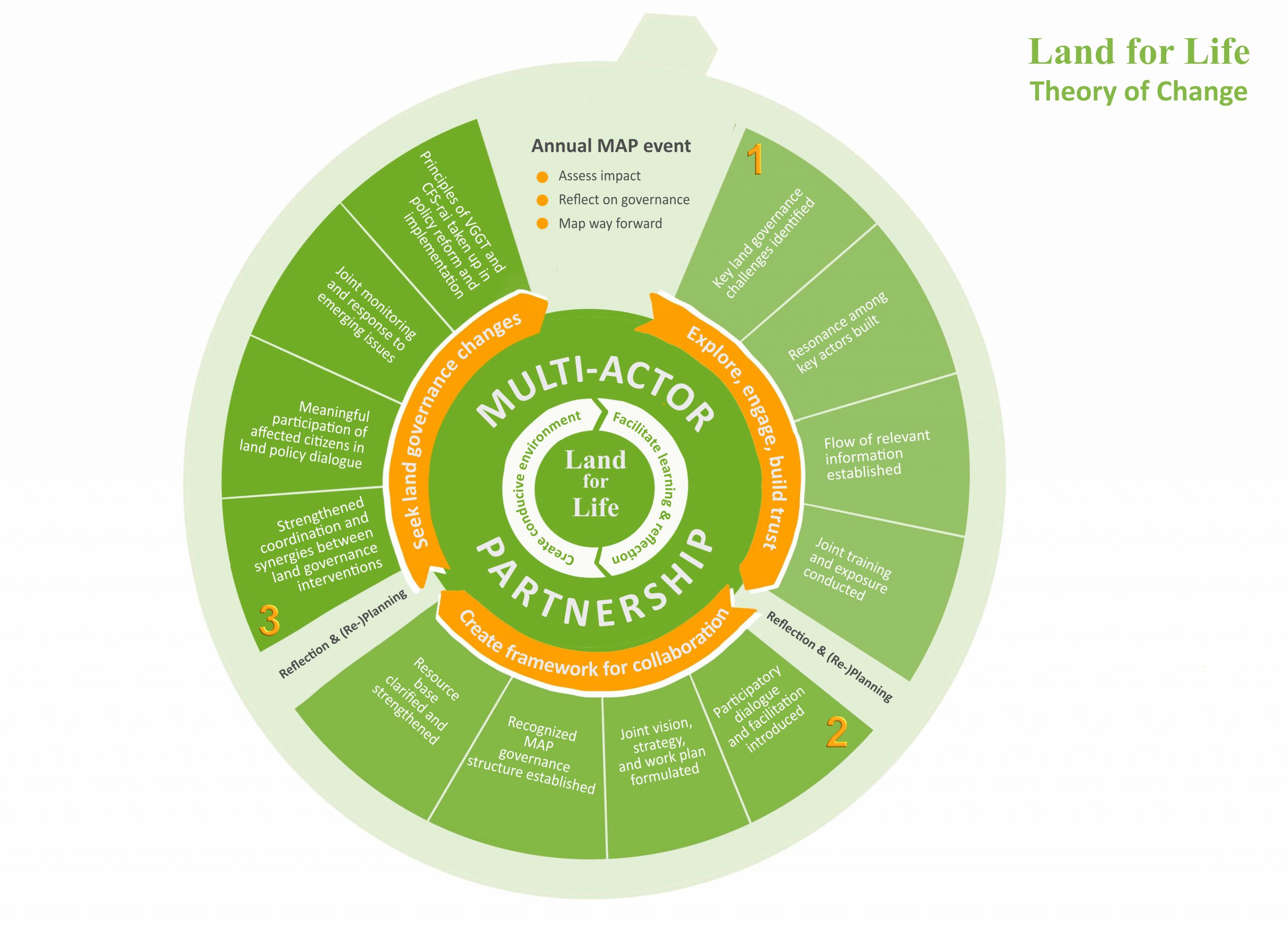
©Trang Nguyen/CSA
Collective change is generated through a longer-term process that evolves over different phases, though – in practice – those phases overlap and may need to be repeated as the collaboration evolves:
![]()
The first phase focuses on exploring the context, engaging all relevant actors and building trust through communication and joint activities. In this phase, it is important that key actors are identified who are motivated and committed to taking the initiative forward.
![]()
The second phase focuses on the creation of a framework for collaboration. Participatory dialogue and facilitation are embedded in the culture of the emerging structure, which is based on a joint vision and commonly shared values. Even though a formalization of the partnership is not necessarily required, the involved actors will need to take some decisions regarding the structure of their collaboration, their roles and responsibilities. At this stage, the former “project structure” will evolve into the Secretariat of the emerging MAP. The core group of committed actors (or some of them) will evolve into the MAP Steering Board. Concrete work plans and clarity on the budget pave the way towards collective action.
![]()
During the third phase the MAP will increasingly generate impacts towards responsible land governance:
![]() providing a platform for different actors and initiatives that engage in a certain land governance context to learn from each other, create synergies, avoid duplication and scale up successful pilot initiatives
providing a platform for different actors and initiatives that engage in a certain land governance context to learn from each other, create synergies, avoid duplication and scale up successful pilot initiatives
![]() facilitating inclusive policy dialogue, with a focus on strengthening the voices of marginalized, rural land-owners and users, in particular women and youth, so as to generate policy proposals which are taking into account their challenges and needs
facilitating inclusive policy dialogue, with a focus on strengthening the voices of marginalized, rural land-owners and users, in particular women and youth, so as to generate policy proposals which are taking into account their challenges and needs
![]() jointly responding to emerging opportunities or trends, such as the elaboration of new relevant legislation or the eruption of conflict in an investment area
jointly responding to emerging opportunities or trends, such as the elaboration of new relevant legislation or the eruption of conflict in an investment area
Throughout those phases, it is the responsibility of the International Support Team to provide backstopping support:
![]() facilitate capacity building of the MAP Secretariats, develop tailor-made tools to accelerate impact, promote regular learning and exchange, contribute to establishing a culture of appreciation and agile process facilitation
facilitate capacity building of the MAP Secretariats, develop tailor-made tools to accelerate impact, promote regular learning and exchange, contribute to establishing a culture of appreciation and agile process facilitation
![]() contribute to creating a conducive environment for national-level MAP, by connecting them to relevant international actors and initiatives and by encouraging all relevant partners to use the MAP as country-level focal point for inclusive land governance policy debate
contribute to creating a conducive environment for national-level MAP, by connecting them to relevant international actors and initiatives and by encouraging all relevant partners to use the MAP as country-level focal point for inclusive land governance policy debate
Pursuing greater synergies and harmonized engagements at country-level will optimize the use of available resources, enhance impact, avoid overburdening national actors and straining fragile institutional structures.
Collective change is generated through a longer-term process that evolves in different phases, though – in practice – those phases overlap and may need to be repeated as the collaboration evolves:
The first phase focuses on exploring the context, engaging all relevant actors and building trust through communication and joint activities. Importantly, in this phase, key actors are identified that are motivated and committed to taking the initiative forward.
The second phase focuses on the creation of a framework for collaboration. Participatory dialogue and facilitation form part of the culture of the emerging structure, which is based on a joint vision and commonly shared values. Even though a formalization of the partnership is not necessarily required, the involved actors will need to take some decisions regarding the structure of their collaboration, their roles and responsibilities. At this stage, the former “project structure” will evolve into the Secretariat of the emerging MAP and the core group of committed actors (or some of them) will evolve into the MAP Steering Board. Concrete workplans and clarity on the budget pave the way towards collective action.
During the third phase, the MAP will increasingly generate impacts towards responsible land governance:
providing a platform for different actors and initiatives that engage in a certain land governance context to learn from each other, create synergies, avoid duplication and scale up successful pilots;
facilitating inclusive policy dialogue, with a focus on strengthening the voices of marginalized, rural land-owners and users, in particular women and youth, so as to generate policy proposals which are taking into account their challenges and needs;
jointly responding to emerging opportunities or trends, such as the elaboration of new relevant legislation or the eruption of conflict in an investment area.
Throughout those phases, it is the responsibility of the International Support Team to provide backstopping support: facilitate capacity building of the MAP Secretariats, develop tailor-made tools to accelerate impact, promote regular learning and exchange, contribute to establishing a culture of appreciation and agile process facilitation. Furthermore, the International Support Team seeks to contribute to creating a conducive environment for national-level MAP, by connecting them to relevant international actors and initiatives and by encouraging all relevant development partners to use the MAP as country-level focal point for inclusive land governance policy debate. Pursuing greater synergies and harmonized engagements at country-level will optimize the use of available resources, enhance impact, avoid overburdening national actors and straining fragile institutional structures.
MSP Action Research
This is an explainatory video from our partners at Partnerships 2030 on what multi-stakeholder partnerships are. During an Action Research on “Added Value of Multi-Stakeholder Partnerships” this video was developed under cooperation with GIZ and the Rotterdam School of Management.

